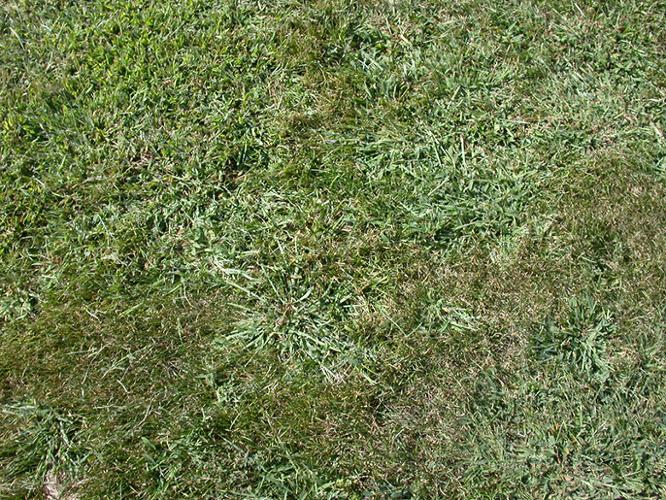Picture of the Week
September 8, 2020
Crabgrass has done very well this summer
Glenn Hardebeck, Turfgrass Research Agronomist, Purdue University
Timely rains have not only helped keep Kentucky bluegrass lawns green across most of Indiana this summer but it has also produced a significant, fast growing crabgrass problem. Early rains through June and into July promoted crabgrass germination while continued rains through August have encouraged growth to the point that many homeowners are having difficulty with clippings. Normally, clippings are not a significant concern on unirrigated lawns during the summer, but good soil moisture and moderate temps have produced an unusual flush of growth for lawns that are usually dormant at this time. Add to that, an infestation of fast growing crabgrass and you end up with a hay producing lawn.
While crabgrass can be controlled post-emergently, control at this late stage would be sporadic requiring at least two applications of something such as Drive (quinclorac). And, since crabgrass will begin to die once we wake up to a frosty morning, crabgrass controls are not recommended at this time. As with any thin lawn, concentrate on good fall fertility to increase the desirable turf's density. Clippings are only an agronomic problem it they are smothering the turf below. Remove clippings only if necessary and try to increase mowing frequency to avoid clipping problems if possible.
Click image to enlarge
Crabgrass has had a good year to germinate and grow.
July and August rains have encouraged a growth flush unusual for many unirrigated lawns with crabgrass adding to the clipping production.



